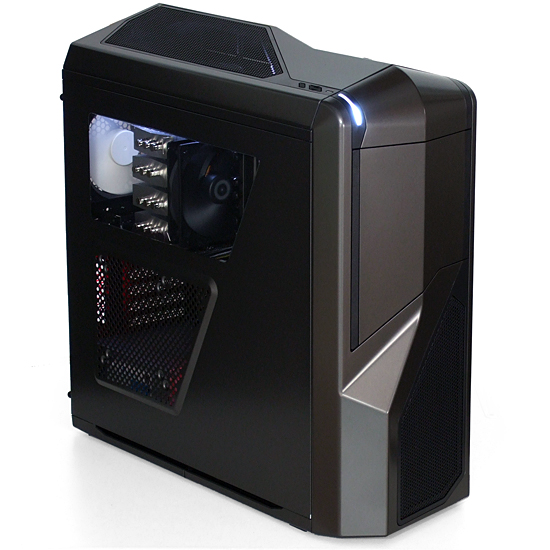System Builder Marathon, August 2012: $2000 Performance PC
Finding Value In Higher Quality
System Builder Marathon, August 2012: The Articles
Here are links to each of the five articles in this quarter’s System Builder Marathon (we’ll update them as each story is published). And remember, these systems are all being given away at the end of the marathon.
To enter the giveaway, please fill out this SurveyGizmo form, and be sure to read the complete rules before entering!
Day 1: The $500 Gaming PC
Day 2: The $1000 Enthusiast PC
Day 3: The $2000 Performance PC
Day 4: Performance And Value, Dissected
Day 5: The Surprise $2000 Alternative Build
Introduction
The objective of most System Builder Marathon machines is to give you more value than the last time you read our series. We spread these out at easy intervals of $500, $1000, and $2000, creating simple comparisons and fixed budgets. Last time around, however, I managed to build a PC I was happy with for $1741, leaving quite a bit of cash on the table. And, for the first time ever, our highest-end machine came within 3% of winning the overall value comparison. We know how hard diminishing returns usually hit the priciest configuration, so I considered that setup a remarkable success.
Many of you didn't agree, though. We didn't spend all of the money. Our SSD was too small. The machine's optical options were too limited. The platform was pulled from Intel's lowly mainstream segment. Its enclosure didn't look like it belonged in a true boss' office. And maybe we should have cut corners elsewhere in order to create a true leader on the value chart. The feedback was all over the place, and not necessarily unanimous.
Get Tom's Hardware's best news and in-depth reviews, straight to your inbox.
For a great many folks, however, the idea of a nicer system has as much to do with its quality as its performance. There are plenty of features we can't represent in a benchmark suite, and we quite often spend money on better parts that don't end up helping our cause when we compare performance per dollar. Nevertheless, our high-end builds start with high expectations, and so we give you this:
Today’s build looks like it might be designed for gaming, but it still has enough class to fit in at the office. Better yet, the case itself is an award-winning product. In fact, most of the components in today’s $2000 build are either award-winners recommended by Tom’s Hardware staff, or newer versions of previously-recommended products. This configuration includes most of the features that you requested from our previous-quarter’s $1741 machine, it comes in at only 0.1% over budget, and, ironically, we can almost guarantee that it'll lose tomorrow's value comparison.
| Q3 2012 $2000 PC Components | ||
|---|---|---|
| Processor | Intel Core i7-3930K (Sandy Bridge-E): 3.2 GHz Base, 3.8 GHz Maximum Turbo Boost, 12 MB Shared L3 Cache | $570 |
| Graphics | EVGA 02G-P4-2670-KR: GeForce GTX 670 2 GB (Standard) | $400 |
| Motherboard | ASRock X79 Extreme4: LGA 2011, Intel X79 Express | $225 |
| Memory | G.Skill F3-1600C8Q-16GAB: DDR3-1600 C8, 4 GB x 4 (16 GB) | $115 |
| System Drive | Mushkin MKNSSDCR240GB-DX: 240 GB, SATA 6Gb/s SSD | $200 |
| Storage Drive | Western Digital AV-GP Green WD20EURS: 2 TB, 5400 RPM Hard Drive | $117 |
| Optical | Asus BW-12B1ST: 12x BD-R, 16x DVD±R, 2x BD-RE | $90 |
| Case | NZXT Phantom 410 Gunmetal | $100 |
| Power | Seasonic SS-850HT: ATX12V V2.3 80 PLUS Silver | $130 |
| CPU Cooler | Scythe Mugen 3 Rev. B SCMG-3100 | $55 |
| Row 10 - Cell 0 | Total Cost | $2002 |
We had to make three minor compromises to get this setup so close to our target budget. They won't seriously detract from the machine's overall quality, though.
To begin, we dropped the GeForce GTX 680 and replaced it with a more value-oriented GeForce GTX 670. We also gave up our 80 PLUS Gold-certified modular power supply to grab a similarly-stable Silver-rated unit, fully aware that our chassis of choice was designed to hide its left-over cables. Finally, we compromised our preferred CPU cooler in favor of a highly-recommended model that costs less.
One question remains, however: as we watch Paul and Don exploit advances in technology to generate even more value from their machines, can I even get close to what last quarter's build managed to do for less money?
Current page: Finding Value In Higher Quality
Next Page CPU, Cooler, And Memory-
Darkerson Interesting setup. I would have favored a way beefier single GPU or a nice dual GPU setup, but I mainly only game, and dont do a lot of encoding or whatnot.Reply -
Reply
The contest opens on August 20, 2012 9:00 PM PDT and closes on September 3, 2012 9:00 PM PDT.
So... i notice now that it opens at August 20, not August 19 when the $500 SBM appeared. I submitted my entry at August 19 10:30 PM. So that means that i haven't entered into the sweepstakes, or did i? I am confused, cause only one entry can be accepted. -
sarinaide i5-3570k/i7-3770kReply
Gigabyte G1 Assassin Z77
120GB SSD
500GB HDD
2xGTX 670
2x4GB DDR3 1866
And still probably cheaper with obviously better performance. -
Crashman sarinaidei5-3570k/i7-3770kGigabyte G1 Assassin Z77120GB SSD500GB HDD2xGTX 6702x4GB DDR3 1866And still probably cheaper with obviously better performance.Probably not, unless you're only testing games. But we should probably test that anyway. Does anyone else want to see it?Reply -
Crashman zander1983Ditch the BR Writer, get a BR combo drive and save yourself $60Sorry, I don't see any combo drives for $30 so the savings would be much less than $60. Plus, you'd lose BD-RE backup capability, which can be handy.Reply
-
sarinaide CrashmanProbably not, unless you're only testing games. But we should probably test that anyway. Does anyone else want to see it?Reply
It would be very interesting, the IvyBridge chips in productivity numbers hold quite well with the SB-E chips that is the only area which should be a contest. -
crisan_tiberiu 16GB ram pointless imo. 2 TB 5400rpm hdd? ...i rather get a 1 TB 7200 rpm hdd. i7 3970k ... i rather get the i7 3770k. From theese i would squeeze in a gtx 680.Reply


